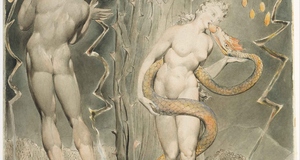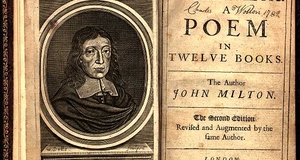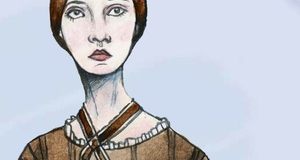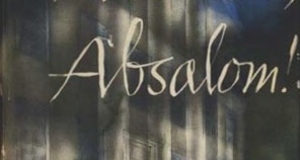Creation and Rebellion in William Faulkner's As I Lay Dying
By
2011, Vol. 3 No. 05 | pg. 1/1
KEYWORDS:
Perusing famous works of literature, one would be hard pressed to find a volume that does not concern itself with the relationship of a creation to its creator. It is a central concern of most religious texts, as well as much of the narrative literature that the academic world deems to be above the realm of escapism. This is hardly surprising in that creation is inherent in existence; moreover, it is central to the subsidiary themes that often drive stories: family relationships, the nature of art, the role of society for the individual, the role of the individual in society, and so on. More specifically, creation is the central fact of the novel: the author gives life to novel in the hopes that the novel will give life to itself.1 An author as well versed in the Christian tradition as William Faulkner would certainly see the parallel between that fact and the famous claim of of St. Athanasius of Alexandria: “God became Man, that we might become God.” Furthermore, Faulkner makes many explicit statements in his works that force the reader’s awareness of Christian dogma and lore, specifically as seen in Milton’s Paradise Lost. In his novel As I Lay Dying, Faulkner establishes direct parallels between the Bundren family sojourn and classical literature, specifically Homer’s Odyssey and Paradise Lost. In addition to heightening the force and dramatic intensity of the novel, the implication Faulkner makes by these associations is that he is presenting a new and similarly important take on the idea of Man’s spiritual journey; i.e., how we create ourselves.2 In As I Lay Dying we see Faulkner’s commentary on the creator/creation relationship with a complex structure that in many ways parallels Milton’s epic poem. Faulkner’s complex and innovative structure twists perspective in order to force the reader to analyze characters without the benefit of a protagonist, antagonist, or trustworthy narrator. Faulkner accomplishes this by forcing his story to revolve around one unorthodox character—a dead woman. Addie’s poise between life and death, power and subjugation, and the physical and metaphysical worlds is what gives the novel real depth and meaning.The title of the novel comes from Homer’s The Odyssey. Odysseus calls the souls of the dead and is shocked to see the ghost of Agamemnon, who then relates his betrayal and murder by his wife, saying “The woman with the dog’s eyes would not close my eyes as I descended into Hades.” This quote can be related to the novel in several ways. Literally, Addie’s eyes are probably mutilated when Vardaman bores holes into her face. However, the quote figures into the story more in view of the personal journeys (their ‘odyssies’ if you will) of the characters: Addie is making the journey into the afterlife just like Agamemnon, Darl is journeying into madness, and the family is journeying to Jefferson. Figuratively speaking, the ‘eyes’ of each are never closed on the journey, which creates conflict. Addie cannot let go of the world of the living and watches as her legacy causes the family to self-destruct; moreover, on page 171 she describes Anse as “driving his eyes at me like two hounds in a strange yard,” using the title to further imply that she blames Anse (among others) for the misery of her life and death. Darl is unable to control the quantity and intensity of his perceptions (i.e. he can’t close his eyes) and as a result loses his ability to view the world with rational perspective. And of course the family itself is making a journey into the ‘land of the dead’ (Addie’s ancestors), unable to rid itself of Addie’s influence and painfully aware of its shortcomings and perversions—in the end we see that even Anse exhibits some broad consciousness of the family’s faults as Cash says twice that Anse is “hangdog and proud too” although “he wouldn’t look at us” (260-261). The other notable connection to classical literature is the act of crossing the river. No author uses this action carelessly, and because of the implication, a water voyage is often used or referenced in the climactic moments of a narrative. Here it can be viewed as another direct reference to Greek literature, as the River Styx is the most famous example of the idea.3 This reference reinforces the idea of Addie as a transitional figure;4 her role as a wife and mother (and in a sense creator) for the family obligates all of them to accompany her on the journey in order to ‘close their eyes,’ i.e. find closure in the relationship. Symbolically, the river scene establishes her also as a transitional figure between life and death, presenting the entire idea of existence under a cloud of ambiguity that defines the book. Hence it is Addie who stimulates conflict in the novel, forcing the reader’s analysis to center on her. The river crossing scene is narrated by Tull and Darl; it is followed by Cash’s one-sentence judgement, and then we hear from Cora and Addie. Cora’s chapter is little less than a sermon that sets us up for Addie’s climactic exposition, with one line that illustrates the extent of Addie’s rebellion: Addie says “He is my cross and he will be my salvation. He will save me from the water and from the fire. Even though I have laid down my life, he will save me.” Cora realizes that Addie is in fact talking about Jewel, and she and the reader are struck by her heresy, not to mention her prescience. This brings us to the centerpiece of the novel, in which Addie speaks. The overarching theme of the chapter is Addie’s anger about life. She hates herself, her schoolchildren, Anse, her father, and God—everyone and everything except Jewel, it seems. And so in Addie we first see rebellion. Because of her status, she in fact personifies rebellion: the very fact that she is a dead character who still speaks and wills is a rebellion in itself. But most relevant is the rebellion against God: I believed that the reason was the duty to the alive...I would think of sin as I would think of the clothes we both wore...the sin the more utter and terrible since he was the intrument ordained by God who created the sin, to sanctify that sin he had created. p.174 This passage draws a direct correspondence to John Milton’s Paradise Lost. Addie’s words echo those of Satan, who rebels against God out of envy when the Son is placed above him. In the beginning the demons’ duty to rebel against God is discussed at the conference in Pandemonium, and the plan decided on (which Satan himself formulates) is to fight God by subverting His new creation, mankind. Addie is clearly thinking along the same lines; furthermore, she is distasteful of creation in general. She loathes herself for being created (p. 170 “I would hate my father for having ever planted me”), and for participating in the necessary perpetuation of creation: “And when I knew that I had Cash, I knew that living was terrible and that this was the answer to it” (171). And so she goes about mocking God by creating—adding and subtracting children in a manner she refers to as ‘cleaning her house’ (176) so that she can take her father’s advice and get “ready to stay dead” (175). And at the end of the passage we see Addie’s resolve, which is again eerily similar to Satan’s: “because people to whom sin is just a matter of words, to them salvation is just words too” (176). Addie feels that Cora cannot understand her life because she has not lived with sin, that because she trusts in the power of words she thinks she can be saved by words instead of actions. But Addie, who believes that “words are no good; that words don’t ever fit even what they are trying to say at” (171), believes that there is no more value in paying service to that system of judgement than in attempting to subvert it. By the end of the chapter we see Addie descending into Hades with her eyes wide open. The issue of rebellion continues to crop up in the book, with Darl rebelling against his mother by destroying her coffin. It may be read that, like Satan, he does this out of envy—he must be perceptive enough to know that Addie loved Jewel more than him—and likewise he is using her wishes (the journey) as an opportunity to get back at her. At any rate he rebels—first by going to the war,5 then by gradually disapproving of his family before finally secretly trying to end the journey in a violent manner. Like Satan, Darl’s rebellion begins in grand eloquence and ends in a pathetic inability to hold his own against his (now former) family.6 In a similar manner the family also rebels against Addie: they use her wishes against her by subverting her dying request, using it instead to further their own individual agendas. For Dewey Dell this means getting an abortion, but this is more clearly seen with Anse: the trip, for Anse, seems to be more about getting a new set of teeth. In the end Anse betrays Addie’s memory by replacing her, although Anse is so simple that there seems little sense in comparing him to Addie, Darl, or Satan. The parallels to Paradise Lost are seen in many facets of the book, but by far the most important is the connection to the trinity. In the poem, Milton gives us two versions: God the Father, the Son, and the Holy Spirit,7 the Holy Trinity in the Christian Tradition since 325 A.D.; and Satan, Sin and Death, the incestuous, disgusting, and rebellious anti-trinity. Of course Milton complicated the book by focusing on Satan and making him the most charismatic character, but although this might cause hesitation, there is no doubt as to who are the good guys and bad guys. In As I Lay Dying, Faulkner creates his own trinity, but he is not so nice as to make moral judgments on behalf of the reader. Like God the Father who creates life, we have Addie Bundren who creates the family and controls the story to a large extent; however, Addie is also a sadistic rebel who falls from grace and from the living. Like the Son, who is the embodiment of the Father’s actions, we have Darl—Addie’s son, and the one character who perceives the intentions of each character and pursues a course of action he perceives to be correct; of course that perception turns to be disastrous, and we can easily see Darl as Satan’s progeny, Death.8 And like the Holy Spirit who guides God’s family and spreads His grace, we have the Bundren family bringing Addie’s legacy to the rest of Yoknapatawpha County, as well as literally providing us with the story; on the other hand the family is dysfunctional and has little respect for their mother, drawing comparison to Satan’s daughter Sin (Death’s mother). Gender confusion aside, the Bundren familial relationships can convincingly represent the Holy Trinity or its un-Holy counterpart equally well. Addie Bundren is the key to understanding As I Lay Dying as an interpretation of classical literature, or to make a more general claim, Addie allows the reader to see the novel as Faulkner’s philosophy on writing. Because we are unsure of the manner in which she exists and how much control she has over herself and the other characters, as we watch her move through the story we analyze the words and actions of everyone else with respect to her. With her as a frame of reference, we watch as characters create themselves by interpreting all the same incidents in particular ways and choosing to rebel against particular powers with different methods and justifications. In essence, it is the duality of Addie’s nature that allows Faulkner himself to create life in the novel. ReferencesFaulkner, William. As I Lay Dying. New York: Random House, 1964. Print. Endnotes1.) This statement is supported by the commentary and works of a large number of highly influential authors, including Graham Greene, Ernest Hemingway, Yann Martel, and Tobias Wolffe. 2.) This in effect a case study of Harold Bloom’s theory as written in “The Anxiety of Influence,” that the writer must surpass the influence of earlier generations (Milton was of particular note) by re-conceiving their entire philosophy of creation through the act of interpretation. This was Faulkner’s design, by his own admission. 3.) Others notable ones include Julius Caesar’s crossing of the Rubicon, Hamlet’s sea imagery in the “To Be or Not to Be” soliloquy, and Satan’s fall to hell and subsequent grapple through Chaos back to earth in Paradise Lost. 4.) She can be viewed as such in many respects—life and death, sanity and insanity, and even, in the case of Anse’s marriages, old and new. 5.) This is not a major factor or known to be a rebellion; however, he is the only member of the family known to have left the south at any time. 6.) I am referring to the fact that towards the end of Paradise Lost, Satan is clearly unable to fight the angels loyal to God. Likewise though at one point we saw Darl disagree with his family (when they went to town while Addie died) he is unable to act when they betray him, and he is sent to the mental institution. 7.) The Holy Spirit is not mentioned much explicitly but rather stands for the spirit of God in His creations; also there is some speculation as to whether or not the Spirit is also the Muse to whom the narrator applies for inspiration at the very beginning of the poem. 8.) After Cash takes over the narrative, we see that Darl’s action is in fact morally ambiguous. Cash says “I thought…it would be God’s blessing if He did take her outen our hands and get shut of her in some clean way…and then when Darl seen that it looked like one of us would have to do something, I can almost believe he done right in a way” (233). Also, in Paradise Lost Satan and Death nearly kill each other but decide against it because they understand each other’s power—not so unlike Darl and Addie’s relationship. Suggested Reading from Inquiries Journal
Inquiries Journal provides undergraduate and graduate students around the world a platform for the wide dissemination of academic work over a range of core disciplines. Representing the work of students from hundreds of institutions around the globe, Inquiries Journal's large database of academic articles is completely free. Learn more | Blog | Submit Latest in Literature |


















